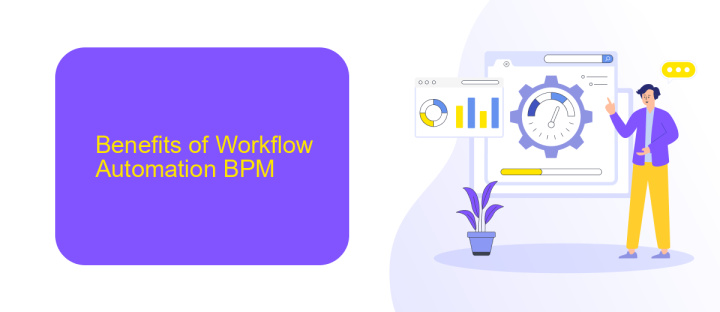Workflow Automation BPM
Workflow automation through Business Process Management (BPM) is revolutionizing the way organizations operate by streamlining complex processes and enhancing efficiency. By leveraging BPM tools, businesses can automate repetitive tasks, reduce human error, and improve overall productivity. This article explores the key benefits, implementation strategies, and best practices for integrating workflow automation into your organization's BPM framework.
Introduction to Workflow Automation BPM
Workflow Automation BPM (Business Process Management) is a transformative approach that enhances the efficiency and effectiveness of business processes through automation. By leveraging technology, organizations can streamline their workflows, reduce manual intervention, and ensure consistency in process execution. This not only improves productivity but also minimizes errors and operational costs.
- Automated task management
- Real-time process monitoring
- Seamless integration with existing systems
- Enhanced collaboration and communication
- Data-driven decision making
One of the key components of successful workflow automation is the integration of various tools and services. Platforms like ApiX-Drive facilitate this by providing easy-to-use solutions for connecting different applications and automating data transfer between them. This ensures that all parts of the workflow are synchronized and functioning efficiently, further enhancing the overall performance of business processes.
Benefits of Workflow Automation BPM

Workflow automation BPM significantly enhances operational efficiency by streamlining repetitive tasks and reducing manual intervention. This leads to faster process execution, minimized errors, and increased productivity. By automating routine workflows, businesses can reallocate human resources to more strategic activities, fostering innovation and growth. Additionally, workflow automation provides better visibility into processes, enabling managers to monitor performance and identify bottlenecks in real-time.
Another key benefit of workflow automation BPM is its ability to integrate various systems and applications seamlessly. Tools like ApiX-Drive facilitate these integrations, allowing different software solutions to communicate and work together harmoniously. This results in a more cohesive IT ecosystem, where data flows smoothly across platforms, enhancing decision-making and operational agility. By leveraging such integration services, businesses can create more robust and adaptable workflows that are capable of evolving with changing market demands.
Challenges of Implementing Workflow Automation BPM

Implementing Workflow Automation BPM (Business Process Management) can significantly enhance operational efficiency, but it also comes with its own set of challenges. These challenges can range from technical difficulties to resistance from employees. Understanding these obstacles is crucial for a successful implementation.
- Integration Complexity: Integrating various systems and software can be complex and time-consuming. Tools like ApiX-Drive can simplify this process by providing seamless integration options.
- Cost: The initial investment in workflow automation tools and training can be high, which may deter some businesses from adopting these technologies.
- Change Management: Employees may resist changes to their established workflows, requiring effective change management strategies to ensure smooth adoption.
- Customization: Tailoring the automation solution to fit specific business needs can be challenging and may require extensive customization.
- Data Security: Ensuring the security of sensitive data during the automation process is critical and can be a significant concern for many organizations.
Addressing these challenges requires careful planning, the right tools, and a commitment to continuous improvement. By leveraging services like ApiX-Drive for integration and focusing on effective change management, businesses can overcome these hurdles and fully benefit from workflow automation BPM.
Best Practices for Implementing Workflow Automation BPM

Implementing Workflow Automation BPM (Business Process Management) can significantly enhance efficiency and productivity within an organization. To ensure a successful implementation, it is crucial to follow certain best practices that can help streamline the process and avoid common pitfalls.
First, it is essential to thoroughly analyze and map out your existing workflows. Understanding the current state of your processes allows you to identify bottlenecks and areas for improvement. This foundational step ensures that automation efforts are targeted and effective.
- Start with simple processes: Begin automating less complex workflows before tackling more intricate ones.
- Engage stakeholders: Involve team members from various departments to gather insights and ensure buy-in.
- Choose the right tools: Select automation tools that align with your business needs and are user-friendly.
- Monitor and optimize: Continuously track the performance of automated workflows and make adjustments as needed.
- Utilize integration services: Platforms like ApiX-Drive can facilitate seamless integration between different applications, enhancing the overall efficiency of your automated workflows.
Finally, providing adequate training and support for your team is crucial. Ensuring that employees understand how to use the new systems and feel comfortable with the changes will lead to smoother adoption and better long-term results. By following these best practices, you can maximize the benefits of Workflow Automation BPM and drive your organization towards greater success.
Future of Workflow Automation BPM
The future of workflow automation in BPM is poised to be transformative, driven by advancements in artificial intelligence and machine learning. These technologies will enable more intelligent and adaptive workflows, allowing businesses to predict and respond to changes in real-time. Enhanced data analytics will provide deeper insights, optimizing processes and improving decision-making. Furthermore, the integration of IoT devices will facilitate seamless communication and coordination across various business functions, streamlining operations and boosting efficiency.
Another significant trend is the increasing importance of integration platforms like ApiX-Drive, which simplify the process of connecting disparate systems and automating data flow between them. This will empower organizations to leverage a more cohesive and interconnected environment, reducing manual intervention and minimizing errors. As a result, businesses will be able to focus more on strategic initiatives rather than routine tasks, ultimately driving innovation and growth. The continuous evolution of these technologies promises a future where workflow automation in BPM is not just a tool but a cornerstone of business strategy.
FAQ
What is Workflow Automation BPM?
How can Workflow Automation improve business efficiency?
What are the key benefits of implementing Workflow Automation BPM?
How do I get started with Workflow Automation BPM?
What tools can I use for Workflow Automation and integration?
Time is the most valuable resource in today's business realities. By eliminating the routine from work processes, you will get more opportunities to implement the most daring plans and ideas. Choose – you can continue to waste time, money and nerves on inefficient solutions, or you can use ApiX-Drive, automating work processes and achieving results with minimal investment of money, effort and human resources.

